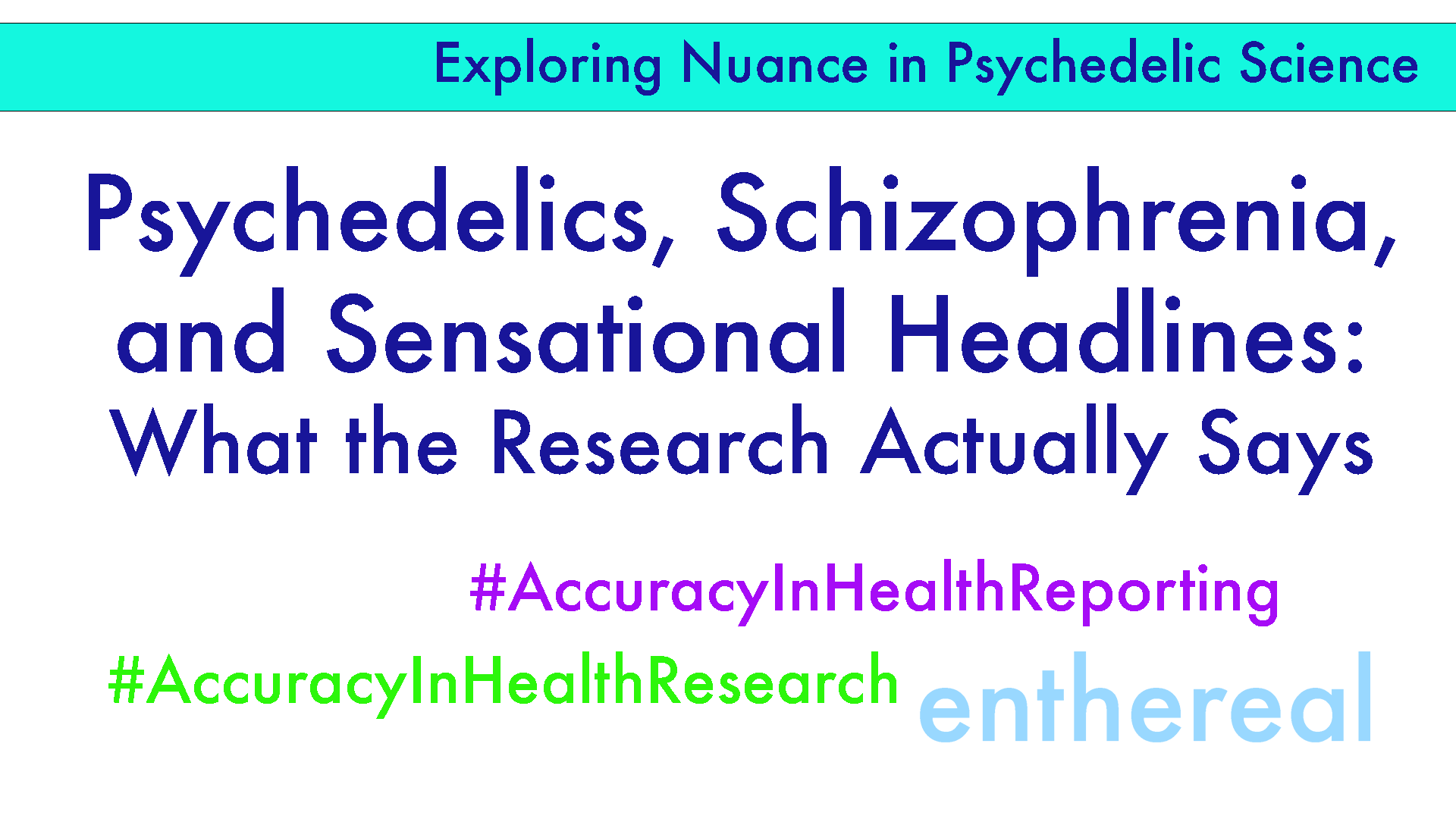The study “Emergency Department Visits Involving Hallucinogen Use and Risk of Schizophrenia Spectrum Disorder” raises important considerations about the association between hallucinogen use and the risk of developing schizophrenia spectrum disorders (SSD). However, its approach and language can be critiqued in terms of how it handles correlation versus causation and methodological clarity.
- The study lumps together a range of compounds, some which aren’t even psychedelics, which raises questions about the validity of the insight as well as the preconceptions of the study authors. “First, we did not have detailed data on the type of hallucinogen used, and the ICD-10 coding included both serotonergic psychedelics (eg, LSD, MDMA, phenethylamines, and psilocybin) and dissociative drugs (eg, ketamine).”
Correlation vs. Causation
- Acknowledged Limitations:
- The authors explicitly state that their findings do not establish causality. However, the repeated use of terms like “risk of developing SSD” could mislead readers into assuming a direct causal relationship.
- Reverse causality is mentioned but not fully resolved; individuals with prodromal symptoms of SSD may self-medicate with hallucinogens, complicating the direction of the association.
- Residual Confounding:
- Although the study adjusts for various demographic and health-related covariates, it lacks data on key confounders like genetic predisposition, childhood trauma, or environmental stressors, which are known risk factors for schizophrenia.
- The inability to control for genetic risks is a major limitation, especially since these factors could explain both the use of hallucinogens and the later diagnosis of SSD.
- Surveillance Bias:
- Individuals with ED (Emergency Department) visits may experience greater follow-up and diagnostic scrutiny than the general population, potentially inflating the observed association between hallucinogen-related visits and SSD.
- Generalizability:
- The findings are specific to individuals with hallucinogen use severe enough to require ED visits, which likely represents a subset of hallucinogen users with higher baseline vulnerabilities (e.g., mental health issues, substance use disorders).
- The study explicitly notes that its results may not generalize to casual or therapeutic hallucinogen use, but this distinction is not emphasized consistently throughout the text.
Criticisms of Language and Approach
- Inflammatory Phrasing:
- The use of “21-fold greater risk” (age- and sex-adjusted hazard ratio) without sufficient contextualization may sensationalize the findings. The absolute risk remains low (3.99% of individuals with hallucinogen-related ED visits developed SSD within 3 years).
- Lack of Specificity in Exposure:
- The study groups all hallucinogens (e.g., LSD, MDMA, ketamine) together, despite their distinct pharmacological profiles and risks. This generalization undermines the ability to draw conclusions about specific substances.
- Potential Misinterpretation:
- Comparing hallucinogen-related ED visits to those involving alcohol or cannabis may imply hallucinogens are uniquely harmful without considering the differing contexts of use and underlying vulnerabilities of users.
- Emphasis on Psychosis-Induced Visits:
- While hallucinogen-induced psychosis represents only 3.5% of the ED visits studied, it is disproportionately emphasized in discussions about risks, which could skew perceptions of overall hallucinogen use.
- Underdeveloped Discussion of Preventive Efforts:
- Although the authors recommend follow-up and harm-reduction interventions, they do not elaborate on how these could be effectively implemented, particularly for recreational hallucinogen users.
Suggestions for Improvement
- Refining Language:
- Replace “risk of developing SSD” with “association with SSD” to avoid implying causality.
- Clearly highlight the absolute risk alongside hazard ratios in all contexts to provide a balanced perspective.
- Stratified Analysis:
- Separate analysis by specific hallucinogens could clarify whether certain substances carry greater risks.
- Further stratify by context of use (e.g., recreational vs. microdosing vs. therapeutic).
- Better Control for Confounding:
- Future studies should incorporate genetic, environmental, and developmental risk factors to better isolate the effects of hallucinogen use.
- Transparency in Limitations:
- More prominent acknowledgment that the study examines a specific subset of hallucinogen users (those requiring ED visits) and may not generalize to the broader population.
- Expanded Discussion on Harm Reduction:
- Provide practical suggestions for clinicians and policymakers to address the observed associations, including education about safe use practices and early intervention for vulnerable populations.
By addressing these flaws, the study could offer a clearer and more balanced understanding of the relationship between hallucinogen use and SSD, while avoiding the potential for misinterpretation or sensationalism.
Join the Conversation: Envisioning Safe, Informed Psychedelic Medicine
At Enthereal, we’re committed to advancing safe, informed, and equitable access to essential medicines, guided by science and community insight. Want to stay updated or contribute to the dialogue?
👉 Subscribe to our newsletter for the latest on psychedelic research, sustainability, and transformative health practices.
👉 Follow us on Instagram [@EntherealPharm] to explore how culture and science come together to heal.
👉 Get involved: Share your thoughts or join our efforts to build a more compassionate future for medicine and mental health.
Let’s shape the future—together. #Rave2Heal #LetsGetReal

Leave a Reply